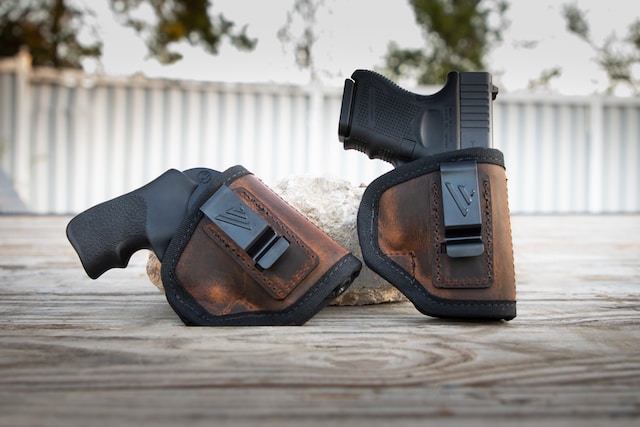Gun owners must take their responsibility to carry their firearms seriously. That starts with a holster that distributes weight evenly and doesn’t allow for snagging or flagging.
The holster should also cover the trigger guard and remain secure whether sitting, standing, or jogging. This can help prevent accidental or negligent discharge.
Don’t Forget About Retention
Retention is one of the most important aspects of a holster. It ensures your gun stays on your person and does not fall out accidentally. There are many reasons why retention is important, and it should be considered by everyone who carries a firearm.
For example, if you are open carrying while walking home from the movie theater and get into a fight with someone who is trying to take your wallet or other property, it is possible that your gun could be knocked out of your holster during the struggle. If this happens, you could lose your weapon, have a bad experience with law enforcement, or both.
Holsters for glock 43 with active retention is a good way to prevent this, but be aware that this adds an extra step to the draw stroke and can heighten the possibility of a negligent discharge on the draw. Be sure to practice with your chosen holster regularly, especially with an empty gun at first.
Don’t Forget About Safety
A holster may seem unnecessary, but it plays a vital role in responsible gun ownership. It prevents accidental discharges, ensures quick access in self-defense situations, and helps gun owners comply with lawful carry requirements.
No holster is completely secure or takeaway-proof, so it’s important to practice safe drawing techniques and keep your finger away from the trigger until you intend to shoot. It’s also a good idea to check that the trigger guard of your handgun is fully covered by the holster and not exposed to anything other than its intended target.
If you wear a light-compatible holster, ensure the light is properly installed. Also, be sure to periodically check the fit of your holster to verify it’s tight enough, broken, and ill-fitting. This will help you to maintain its proper function and protect it from excessive wear.
Don’t Forget About Comfort
While some may buck convention and carry their firearm in their pocket or waistband sans holster, this is far from the most comfortable option. Moreover, it exposes your firearm to bumps and nicks and could easily result in a negligent discharge.
Having a comfortable holster will allow you to carry it more often and, thus, increase your readiness to draw it in the event of an emergency. A good holster will also keep the gun in place while you’re wearing it, making it difficult to remove from your person by someone else.
Additionally, it’s important that the holster fully covers the trigger guard. This will prevent unauthorized fingers and clothing from accidentally slipping into that area and firing your pistol.
Don’t Forget About Maintenance
Whether leather or Kydex, holsters require maintenance to help protect and prolong their life. They may need to be reshaped, reinforced, or repaired due to excessive wear, stretching of retention straps and clips, or other issues caused by daily use and exposure to harsh environments.
Inspecting your holsters regularly can identify problems before they become serious and help keep you safe and confident when carrying your weapon. Checking for signs of loose stitching, cracks, or other damage can prevent your holster from becoming compromised and allow it to continue performing as intended.
Inspect any clips, washers, or other small components regularly for rust or compromises. Taking care of your holster can help it care for you, so make it a habit! This is a simple step that can pay major dividends. If you follow these basic principles, you can expect your holster to last longer and be ready for the next time you need it.




